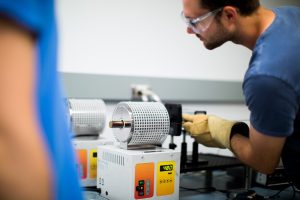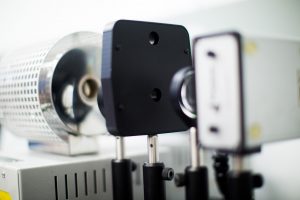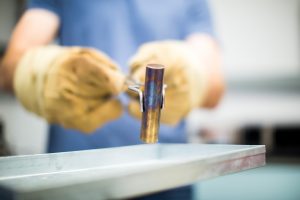


In the pyrometry lab, students are introduced to the principles of non-contact temperature measurement. A rod of material is placed in a tube furnace and heated to a set temperature. The infrared radiation that is given off by the sample is collected by the pyroelectric detector, and a corresponding voltage is measured. By comparing the results from experimental samples to a simulated “blackbody”, the students can calculate emissivity values for the various materials selected and then compare them to reference values from the literature. The effect of surface finish on emissivity is also determined using polished and unpolished samples.
Equipment Used
- Small tube furnace
- Optical chopper
- Pyroelectric detector
- Lock-in amplifier connected to Signal Recovery’s 5105Acquire software
- Oscilloscope
- Fan for cooling furnace
Materials Tested
- Graphite well (simulated blackbody)
- Graphite flat
- Polished stainless steel (either 304, 316 or 321 alloy)
- Unpolished/rough stainless steel (either 304, 316, or 321 alloy)